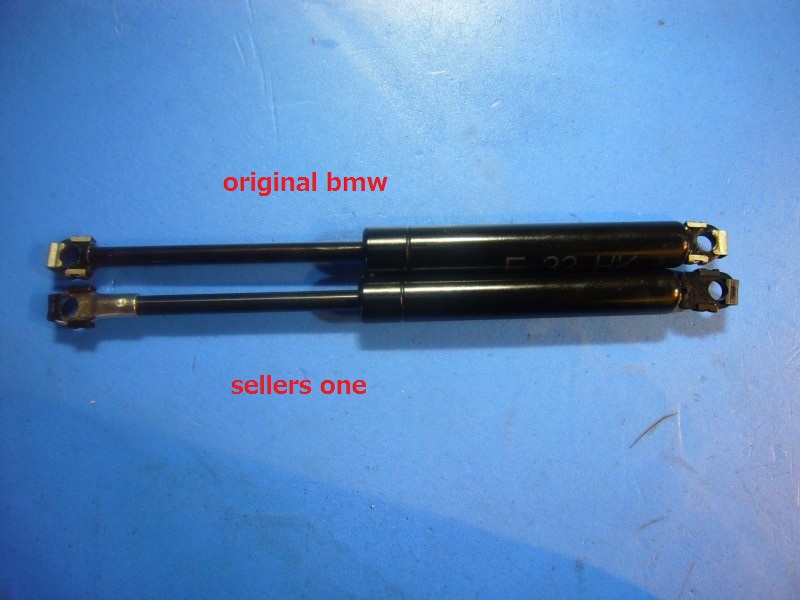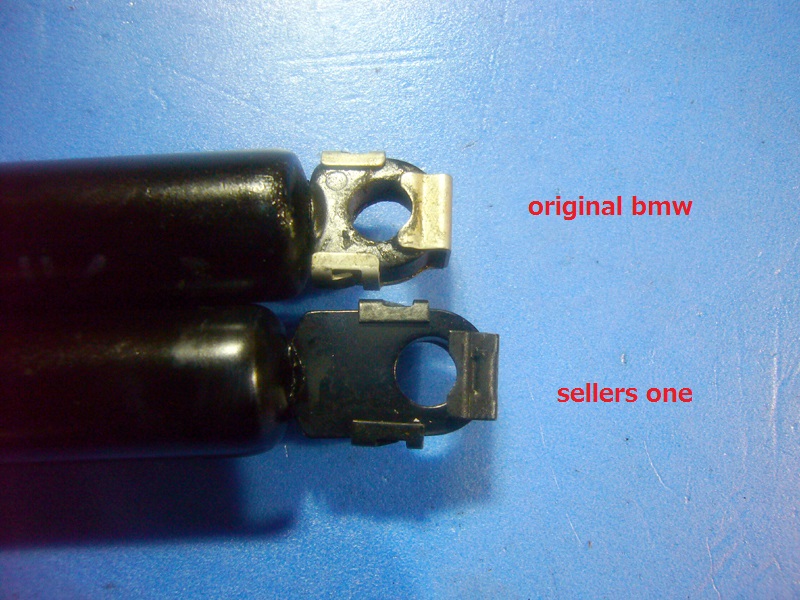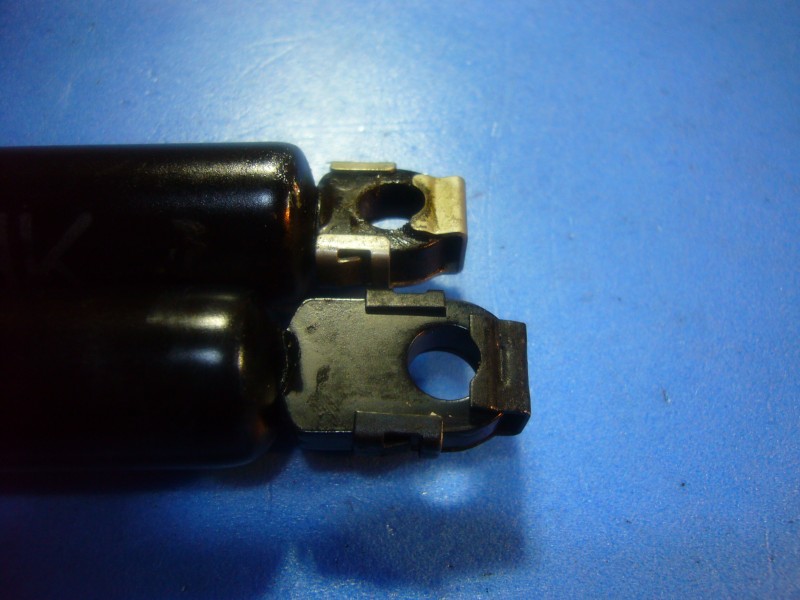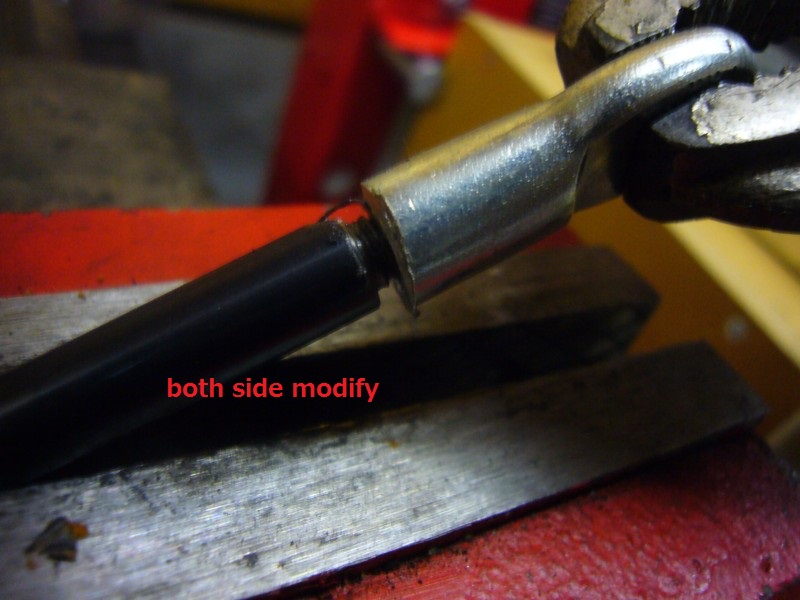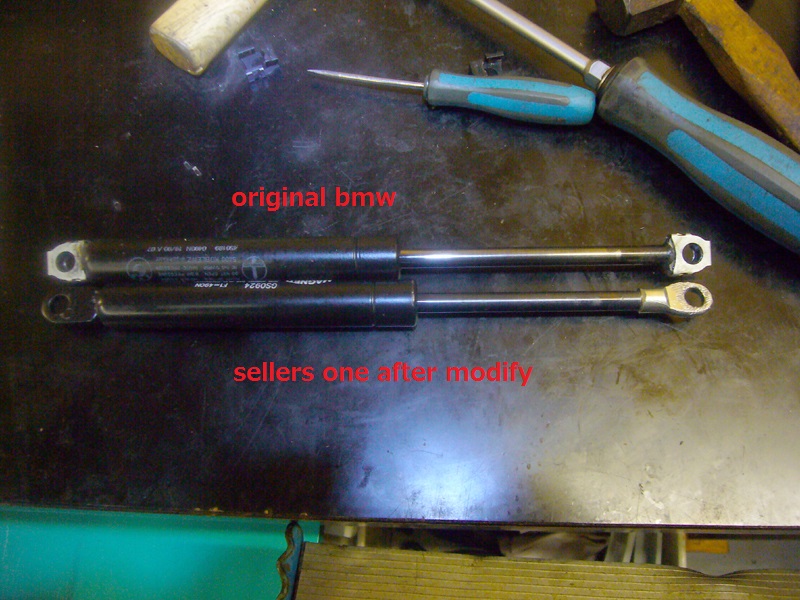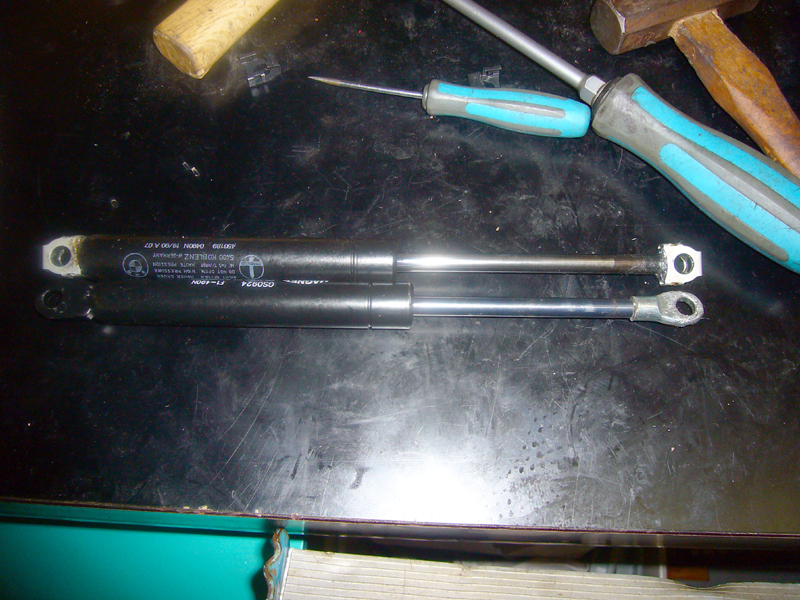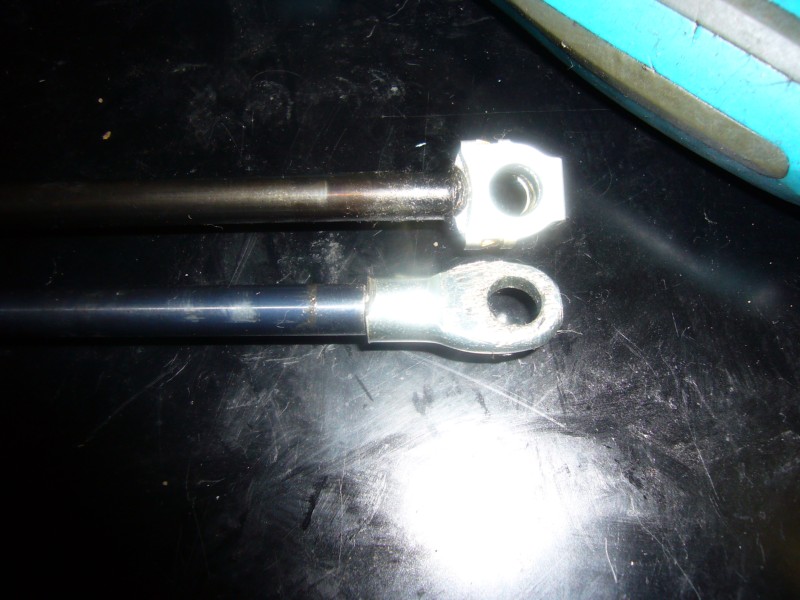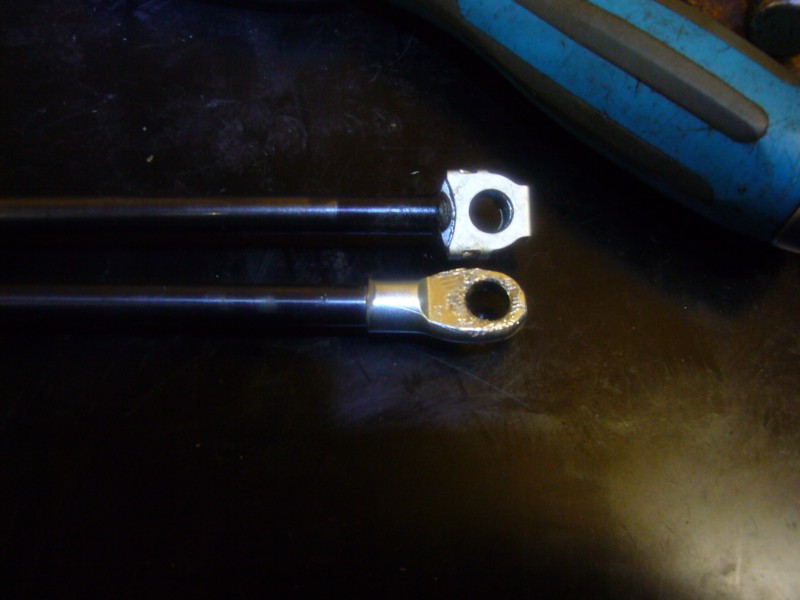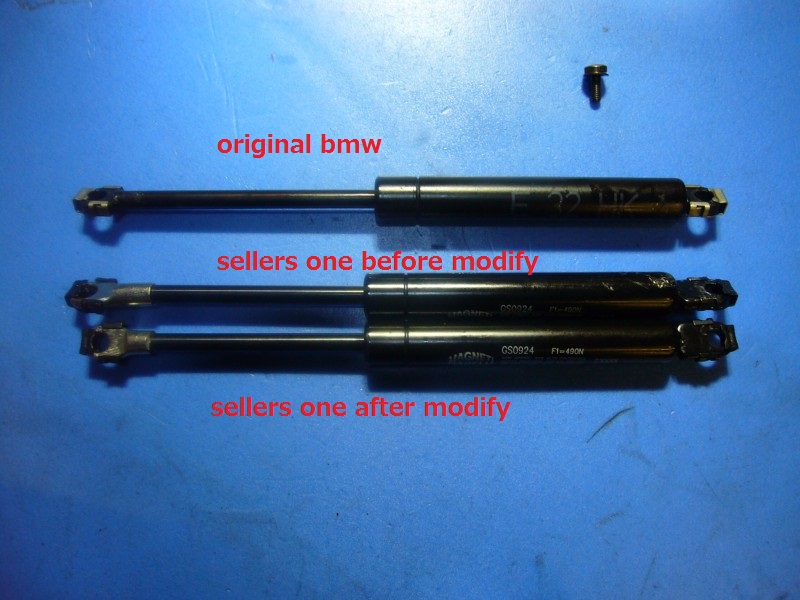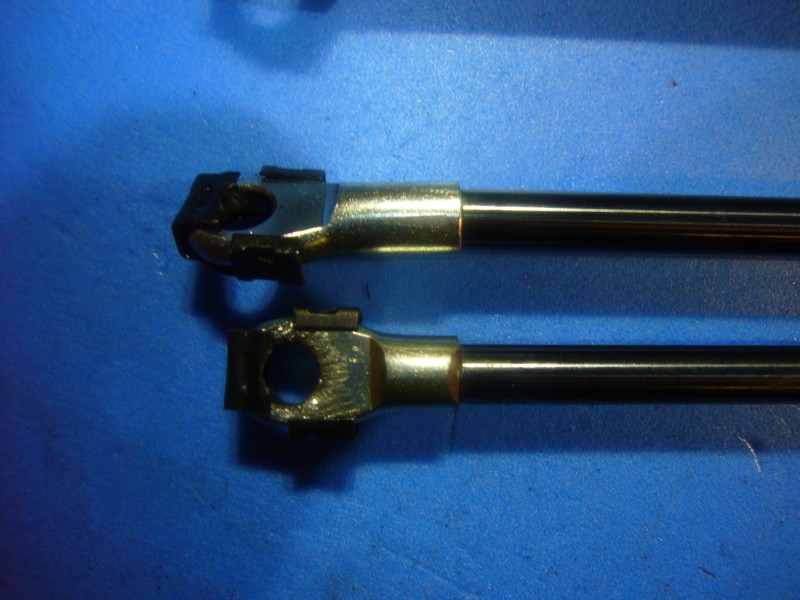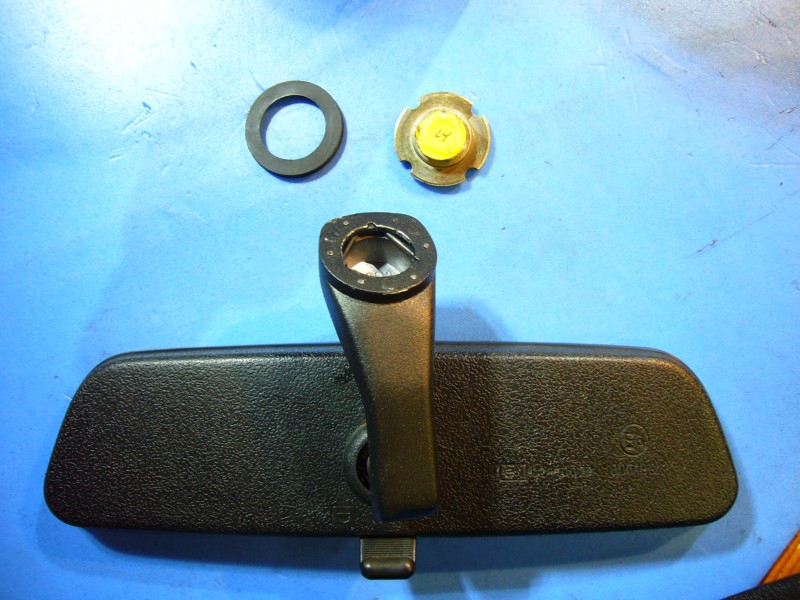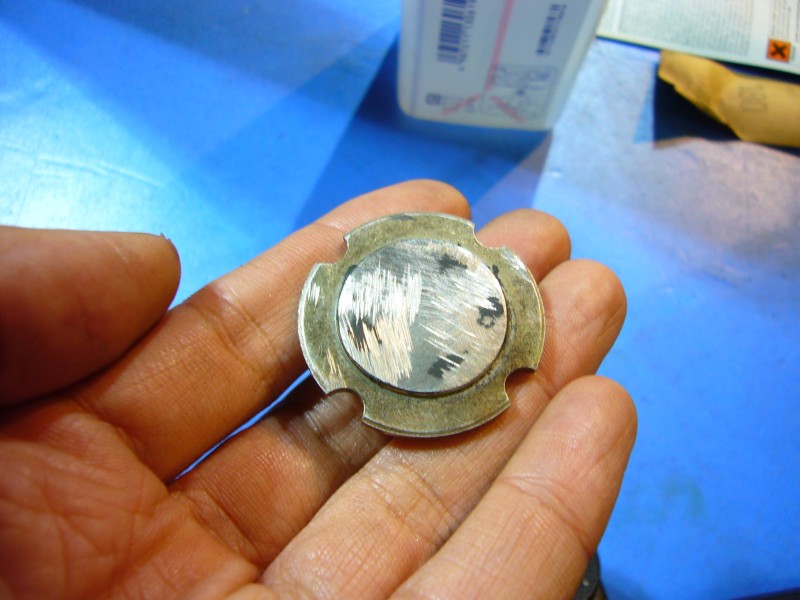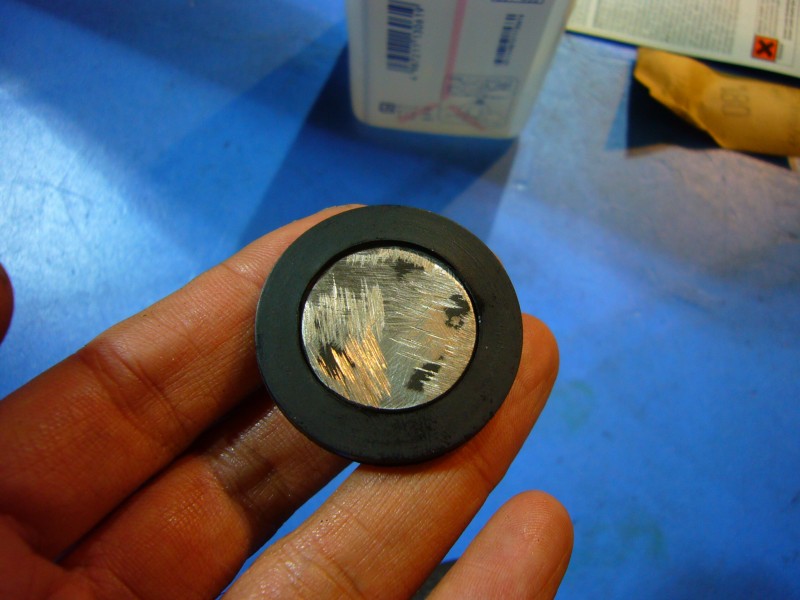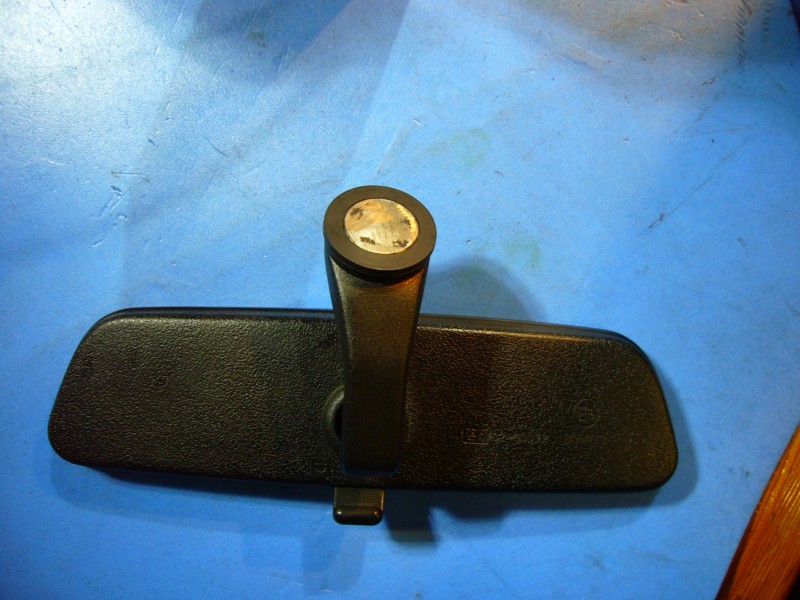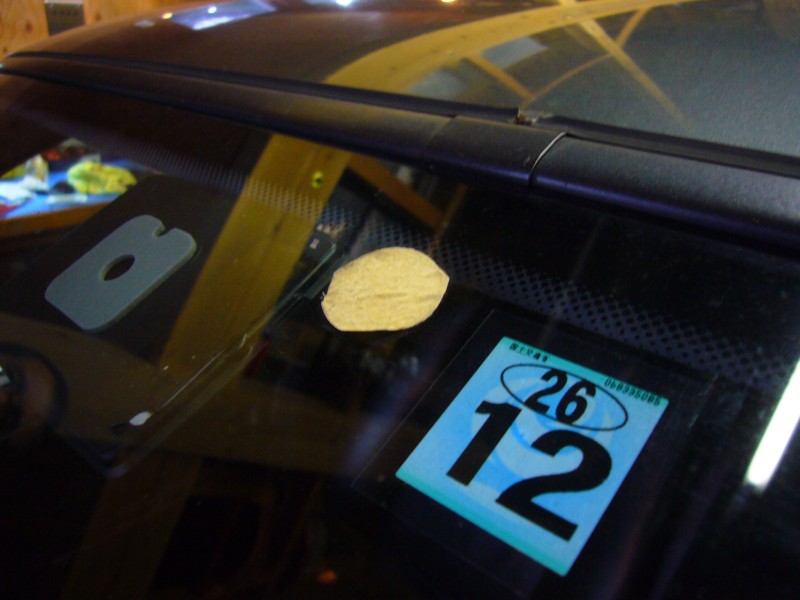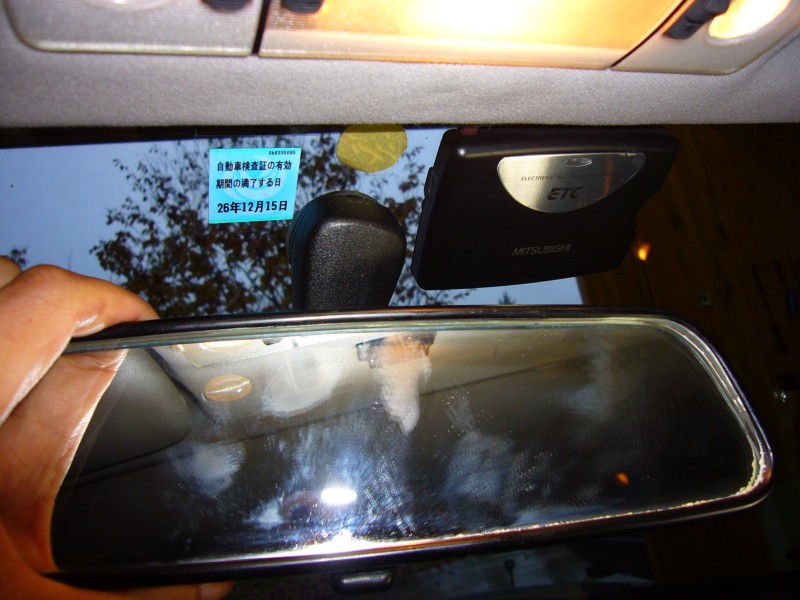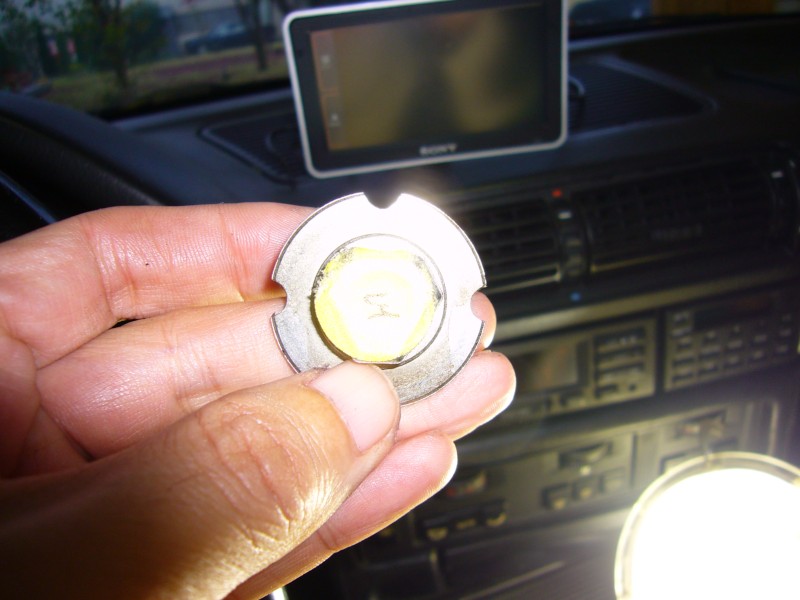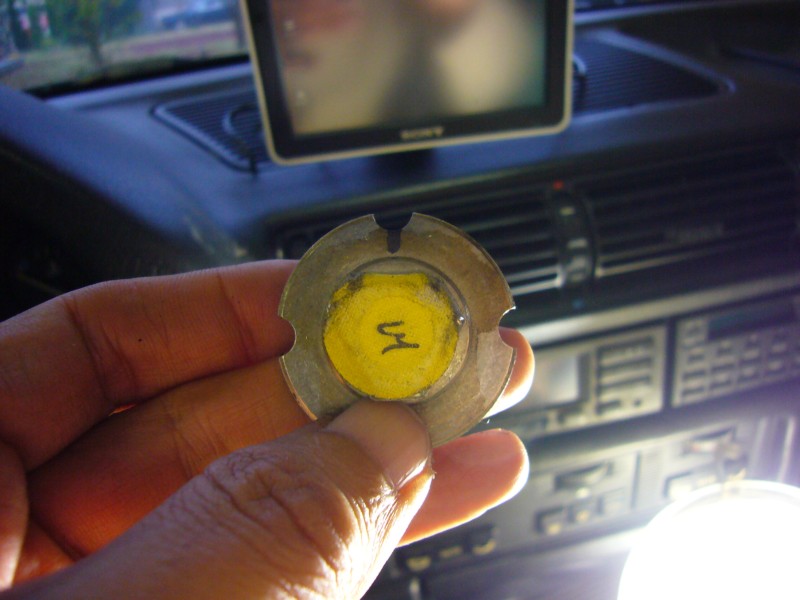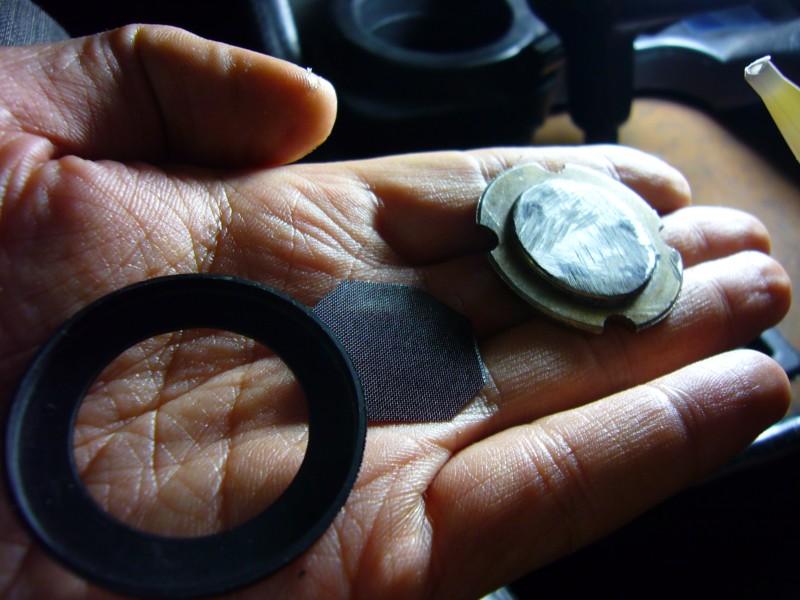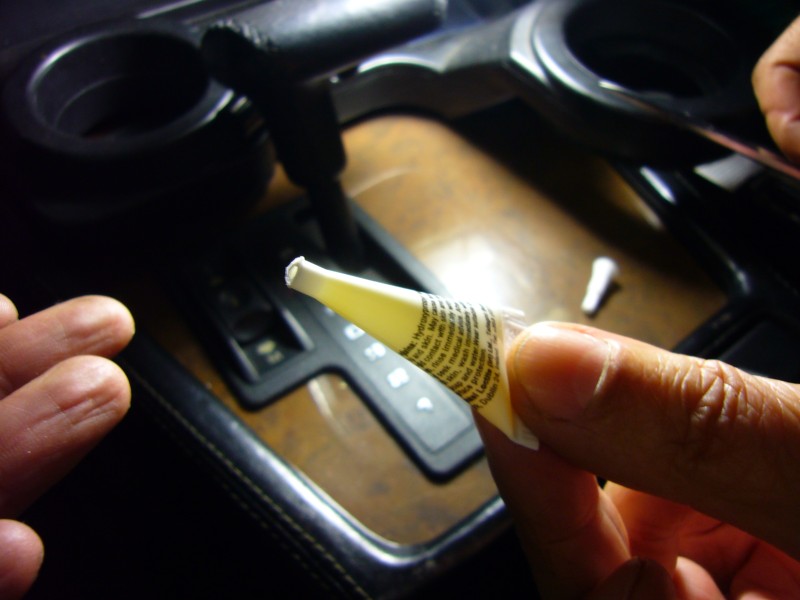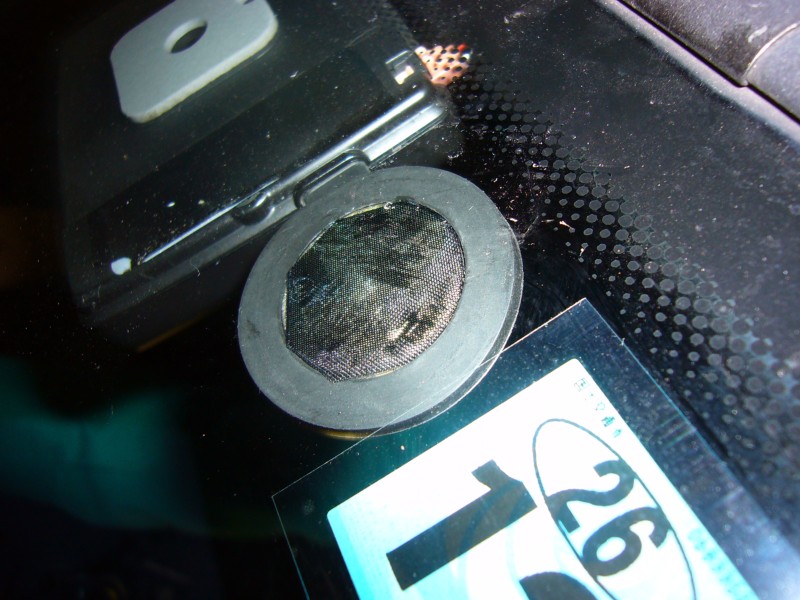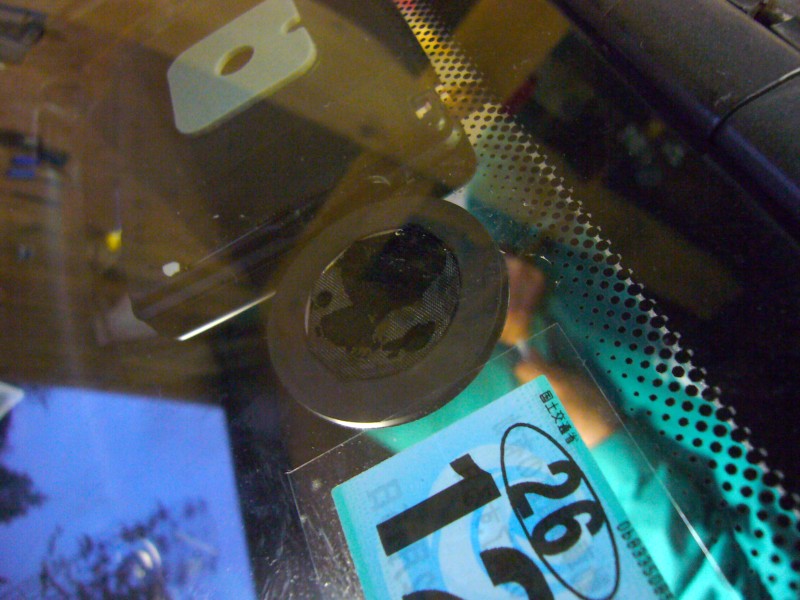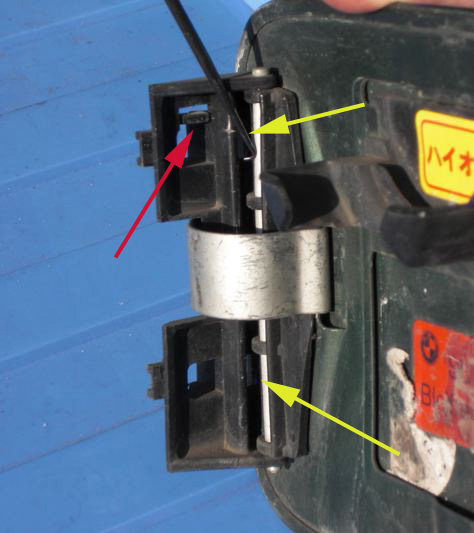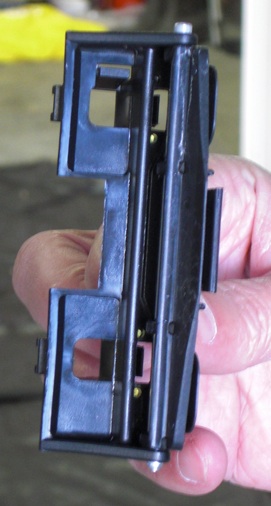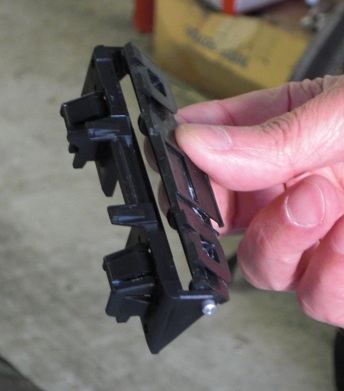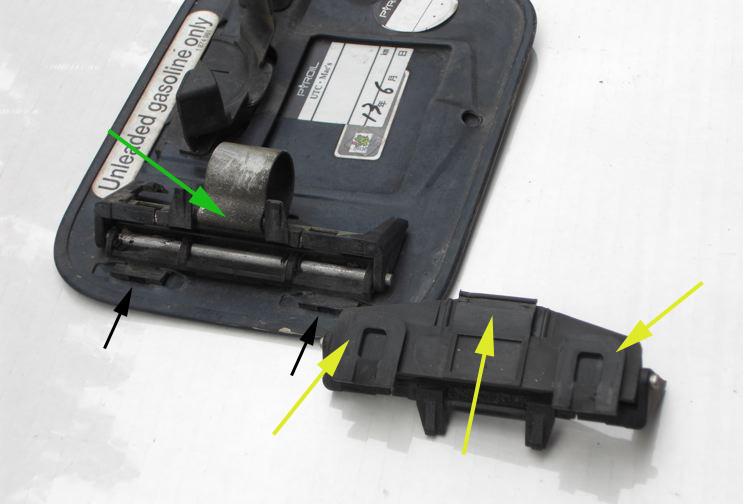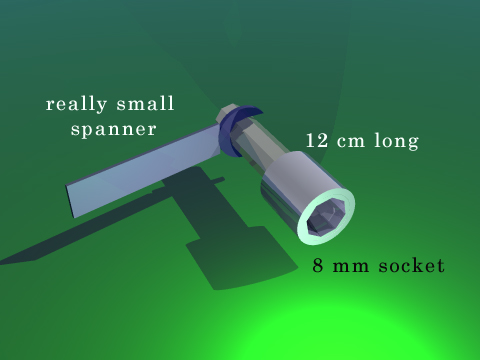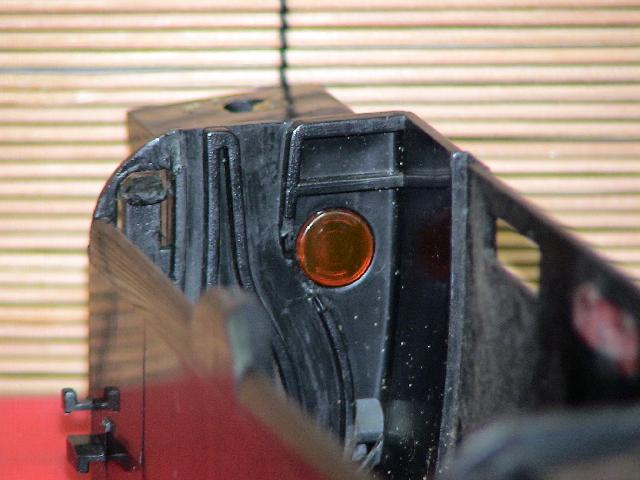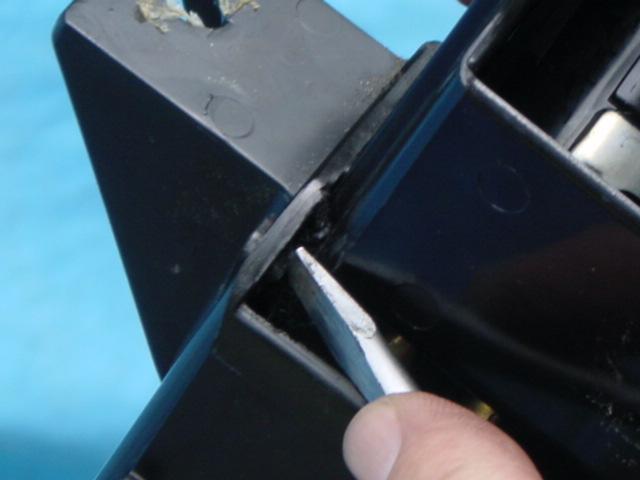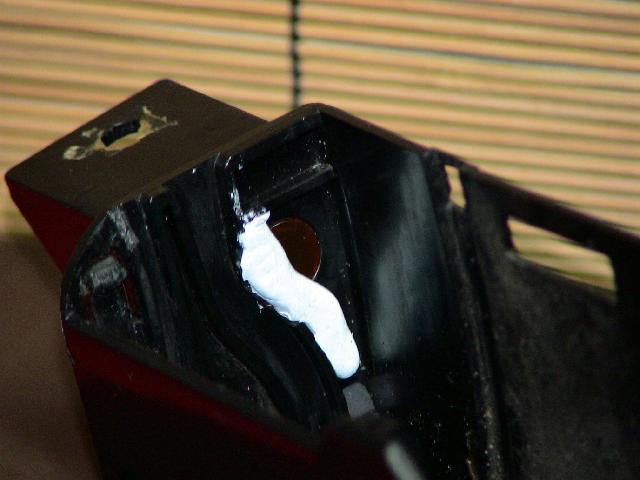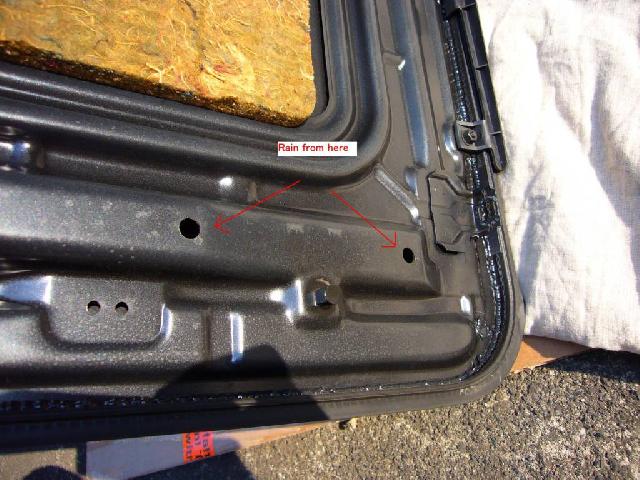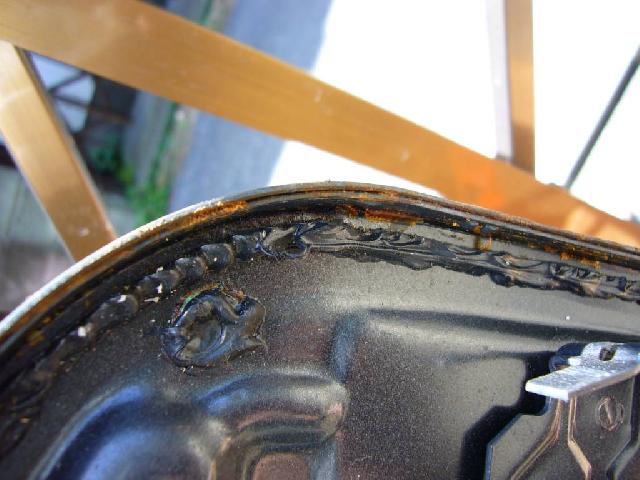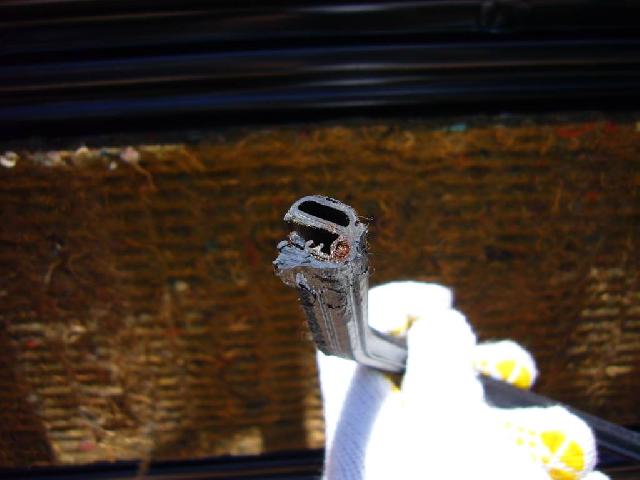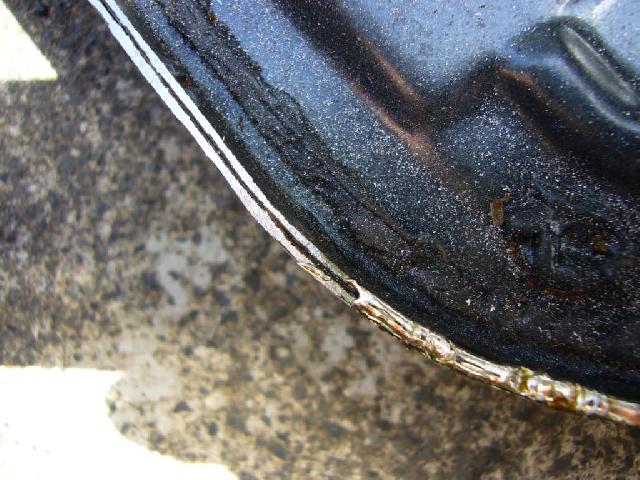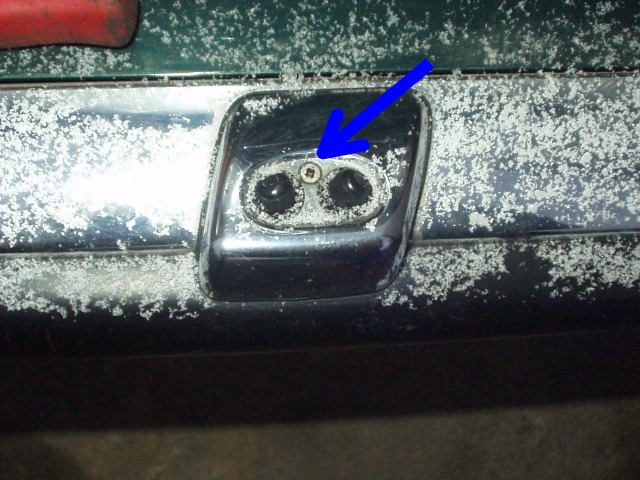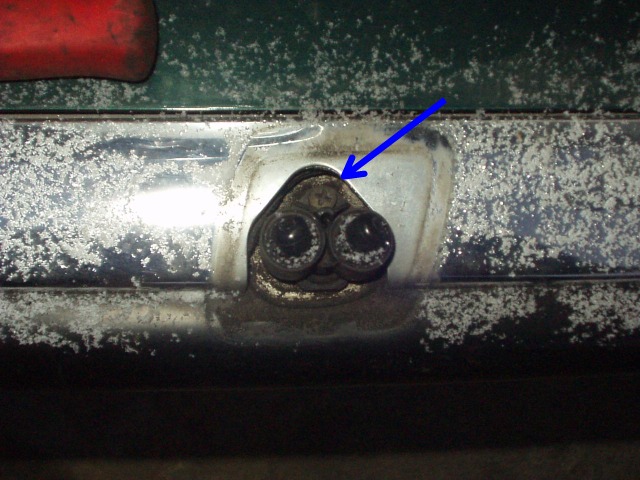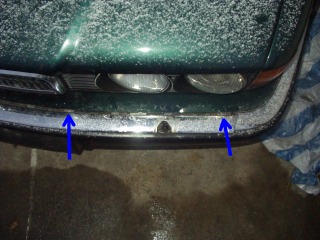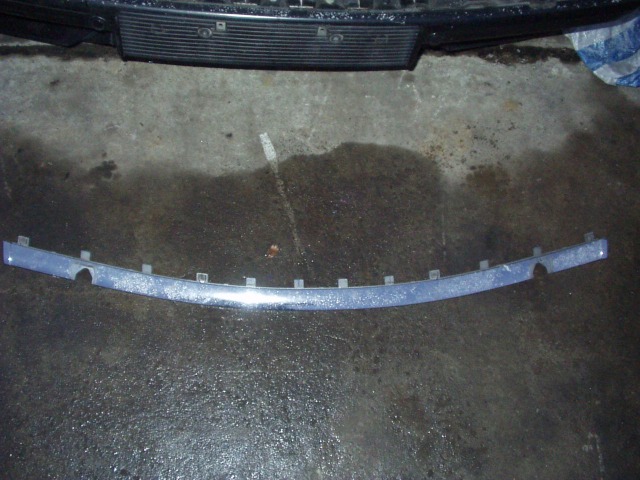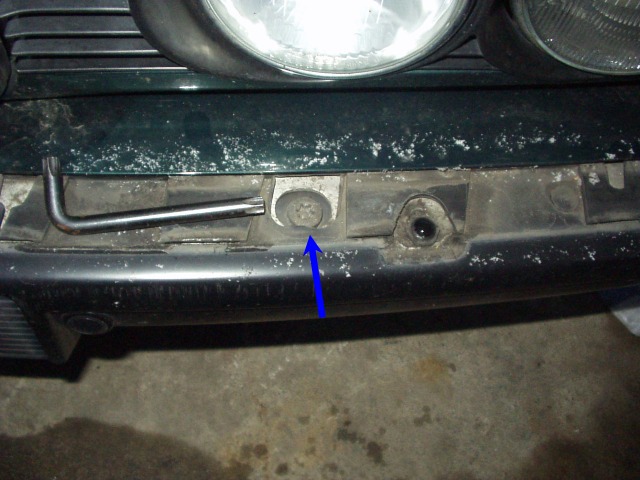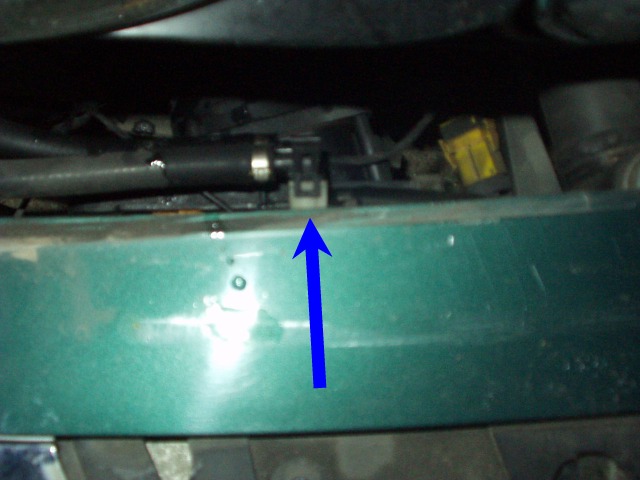The original BMW trunk shocks/pressurized spring are made by Stabilus-Boge,
Gas pressurized spring 490N 51241908431.
Cross Interchange Parts Factory Numbers of some of the various makers
BMW 51241908431
HK G10139
KLOKKE 00597100
FEBI Bilstein 01785
TRISCAN 871011203
STABILUS 1575BV
Magneti Marelli GS0924
The original ones are of course top quality but also pretty expensive from
the dealer or online shops. There are a lot of aftermarket ones available,
but I have also read that some are too long to fit. Searching the internet
I found Magneti Marelli units at a reasonable price for BMW series 7 E32 and
ordered them. Tried to install them. Installed one and the trunk lid could
not be closed anymore, it stayed up/open by about 5 cm. Reason was that
the rod of the shock hit the end of the damper = the unit is too long. As I had
ordered them overseas and paid for the freight, return and making a claim would be a
hassle.
So we modified them./b>
Found out that the mount on the rod is screwed on, so we
unscrewed the mounting hook and ground off about 5 mm from both the threaded
stud on the rod and the top clip with female thread.
Not all shocks will have the mounts screwed on, some will have them welded.
Here are pics before and after and to compare with the original, an original BMW gas
shock is also shown.
